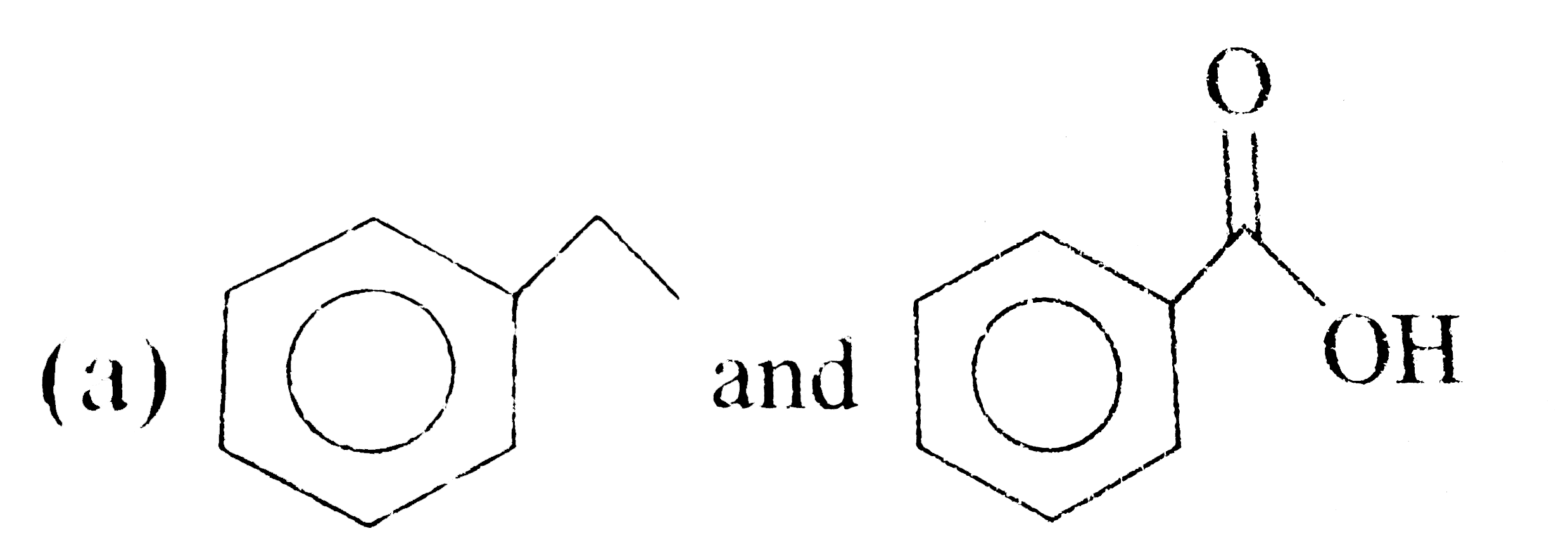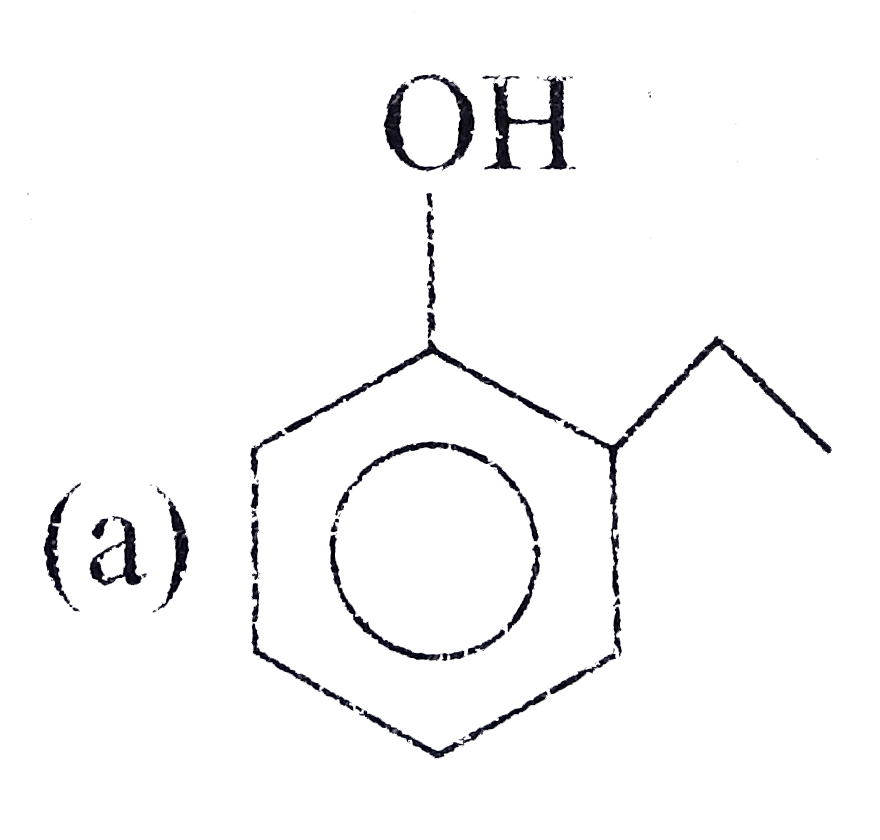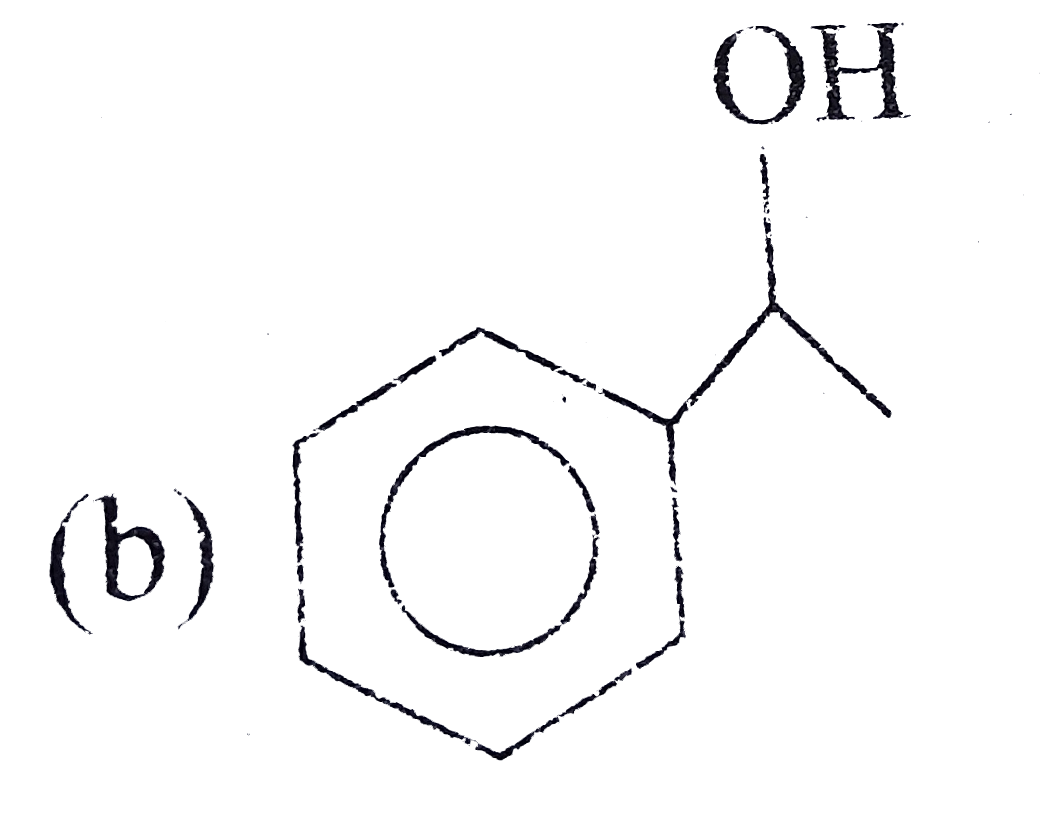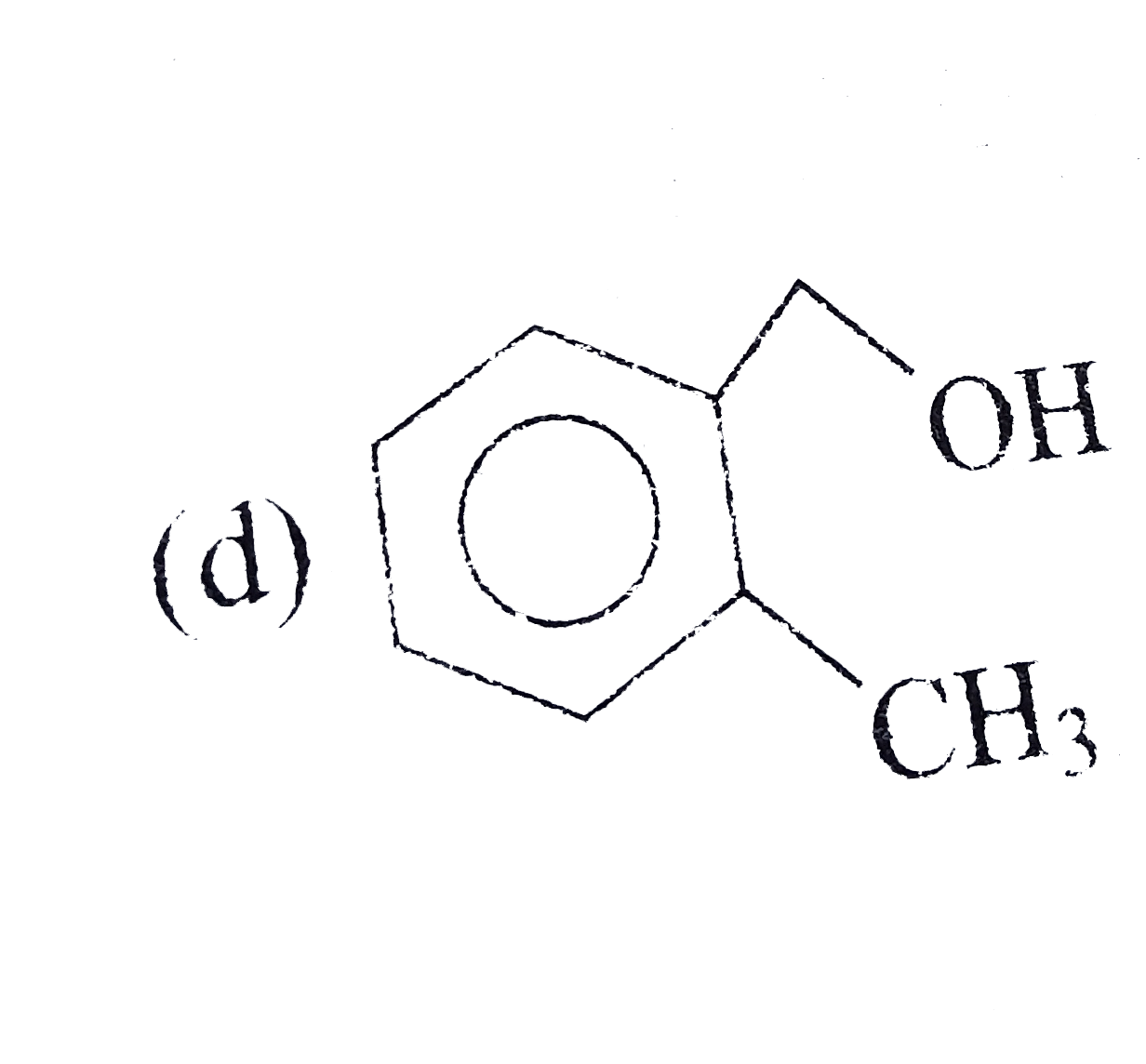An organic compound (A)C8H10O was subjected to a series of test in laboratory.
It was found that this compound :
(i) Rotates the plane polarized light.
(ii) Evolves H2 gas with Na.
(iii) Reaches with I2 and NaOH to produce yellow ppt.
(iv) Does not react with Br2/CCl4
(v) Reacts with hot KMnO4 to form (B)C7H6O2, which can also be synthesized by benzene and carbonyl chloride followed by hydrolysis.
(vi) Loses optical acitvity as a result of reduction with Red P+Hi to form C.
(vii) Reacts with Lucas reagent in about 5 minutes.
Compounds B and C are respectively:




The correct Answer is:C, D
Similar Questions
An organic compound (A)C8H10O was subjected to a series of test in laboratory.
It was found that this compound :
(i) Rotates the plane polarized light.
(ii) Evolves H2 gas with Na.
(iii) Reaches with I2 and NaOH to produce yellow ppt.
(iv) Does not react with Br2/CCl4
(v) Reacts with hot KMnO4 to form (B)C7H6O2, which can also be synthesized by benzene and carbonyl chloride followed by hydrolysis.
(vi) Loses optical acitvity as a result of reduction with Red P+Hi to form C.
(vii) Reacts with Lucas reagent in about 5 minutes.
ATsCl−−→Xalc.KOH−−−−−→YConc.H2SO4−−−−−−−→Z
Find out correct structure of Z.
View SolutionAn organic compound (A) C8H10O was subjected to a series of test in laboratory. It was found that this compound :
(i) Rotates the plane polarized light
(ii) Evolves H2 gas with Na.
(iii)Reacts with I2 and NaOH to produce yellow ppt.
(iv) Does not react with Br2/CCl4
(v) Reats wtih not KMnO4 to form (B)C7H6O2, which can also be synthesized by benzene and carbonyl chloride followed by hydrolysis.
(vi) Loses optical activity as a result of reduction with Res P+HI to form 'C'
(vii) Reacts with Lucas reagent in about 5 minutes.
ATsCl−−→Xalc. KOH−−−−→Yconc.H2SO4−−−−−−→Z.
Find out correct structure of Z.
View Solution
Knowledge Check
An organic compound (A)C8H10O was subjected to a series of test in laboratory.
It was found that this compound :
(i) Rotates the plane polarized light.
(ii) Evolves H2 gas with Na.
(iii) Reaches with I2 and NaOH to produce yellow ppt.
(iv) Does not react with Br2/CCl4
(v) Reacts with hot KMnO4 to form (B)C7H6O2, which can also be synthesized by benzene and carbonyl chloride followed by hydrolysis.
(vi) Loses optical acitvity as a result of reduction with Red P+Hi to form C.
(vii) Reacts with Lucas reagent in about 5 minutes.
Find out structure of compound A:A B
B C
C D
D
An organic compound (A) C8H10O was subjected to a series of test in laboratory. It was found that this compound :
(i) Rotates the plane polarized light
(ii) Evolves H2 gas with Na.
(iii)Reacts with I2 and NaOH to produce yellow ppt.
(iv) Does not react with Br2/CCl4
(v) Reats wtih not KMnO4 to form (B)C7H6O2, which can also be synthesized by benzene and carbonyl chloride followed by hydrolysis.
(vi) Loses optical activity as a result of reduction with Res P+HI to form 'C'
(vii) Reacts with Lucas reagent in about 5 minutes.
Compounds B and C are respectively :A B
B C
C D
D
An organic compound (A) C8H10O was subjected to a series of test in laboratory. It was found that this compound :
(i) Rotates the plane polarized light
(ii) Evolves H2 gas with Na.
(iii)Reacts with I2 and NaOH to produce yellow ppt.
(iv) Does not react with Br2/CCl4
(v) Reats wtih not KMnO4 to form (B)C7H6O2, which can also be synthesized by benzene and carbonyl chloride followed by hydrolysis.
(vi) Loses optical activity as a result of reduction with Res P+HI to form 'C'
(vii) Reacts with Lucas reagent in about 5 minutes.
Find out structure of compound 'A' :A B
B C
C D
D
An aromatic compound (A), C9H12O was subjeted to a series of tests in the laboratory. It was found that this compound ,
(i) does not form silver mirror with Tollens' reagent.
(ii) rotates the plane of polarised light.
(iii) reacts with sodium metal to evolve hydrogen gas. ltbr> (iv) does not decolourise pink colour of bromine water.
(v) reacts with hot KMnO4 to form monocarboxylic acid 'B' which on decarboxylation gives benzene.
(vi) reacts with Lucas reagent in about 5 min.
(vii) reacts with I2 and NaOH to produce yellow coloured precipitation of the compound (C ) .
(viii) loses its optical activity due to formation of compound (D ) on reaction with Red P and HI.
Molecular formula of the compound (C ) will be :
View SolutionAn aromatic compound (A), C9H12O was subjeted to a series of tests in the laboratory. It was found that this compound ,
(i) does not form silver mirror with Tollens' reagent.
(ii) rotates the plane of polarised light.
(iii) reacts with sodium metal to evolve hydrogen gas. ltbr> (iv) does not decolourise pink colour of bromine water.
(v) reacts with hot KMnO4 to form monocarboxylic acid 'B' which on decarboxylation gives benzene.
(vi) reacts with Lucas reagent in about 5 min.
(vii) reacts with I2 and NaOH to produce yellow coloured precipitation of the compound (C ) .
(viii) loses its optical activity due to formation of compound (D ) on reaction with Red P and HI.
The functional groups present in the compound (A) is :
View SolutionAn aromatic compound (A), C9H12O was subjeted to a series of tests in the laboratory. It was found that this compound ,
(i) does not form silver mirror with Tollens' reagent.
(ii) rotates the plane of polarised light.
(iii) reacts with sodium metal to evolve hydrogen gas. ltbr> (iv) does not decolourise pink colour of bromine water.
(v) reacts with hot KMnO4 to form monocarboxylic acid 'B' which on decarboxylation gives benzene.
(vi) reacts with Lucas reagent in about 5 min.
(vii) reacts with I2 and NaOH to produce yellow coloured precipitation of the compound (C ) .
(viii) loses its optical activity due to formation of compound (D ) on reaction with Red P and HI.
Structure of the compound (A ) will be :
View SolutionAn aromatic compound (A), C9H12O was subjeted to a series of tests in the laboratory. It was found that this compound ,
(i) does not form silver mirror with Tollens' reagent.
(ii) rotates the plane of polarised light.
(iii) reacts with sodium metal to evolve hydrogen gas. ltbr> (iv) does not decolourise pink colour of bromine water.
(v) reacts with hot KMnO4 to form monocarboxylic acid 'B' which on decarboxylation gives benzene.
(vi) reacts with Lucas reagent in about 5 min.
(vii) reacts with I2 and NaOH to produce yellow coloured precipitation of the compound (C ) .
(viii) loses its optical activity due to formation of compound (D ) on reaction with Red P and HI.
The compound (D ) will be :
View SolutionAn aromatic compound (A), C9H12O was subjeted to a series of tests in the laboratory. It was found that this compound ,
(i) does not form silver mirror with Tollens' reagent.
(ii) rotates the plane of polarised light.
(iii) reacts with sodium metal to evolve hydrogen gas. ltbr> (iv) does not decolourise pink colour of bromine water.
(v) reacts with hot KMnO4 to form monocarboxylic acid 'B' which on decarboxylation gives benzene.
(vi) reacts with Lucas reagent in about 5 min.
(vii) reacts with I2 and NaOH to produce yellow coloured precipitation of the compound (C ) .
(viii) loses its optical activity due to formation of compound (D ) on reaction with Red P and HI.
Monocarboxylic acid (B) will be :
View Solution
